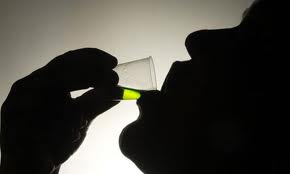What Is Methadone?
What is Methadone ? Methadone is a an opioid medication (a narcotic). It is used for the treatment of pain and for the treatment of opioid addiction. German scientists produced this medication during the second world war. Some think this was in response to a shortage of morphine.
Methadone came to the United States in 1947. It was initially used for the treatment of pain. It was particularly helpful because of it’s long length of action. It was studied in the 1960’s for the use in opioid addiction.
What is methadone being used for today? Methadone now has the dual role of pain management and opioid addiction treatment, among other uses. Methadone is a safe and effective medication according to the FDA and is classified as a Schedule II medication by the DEA. Because of its high addictive effects, methadone is closely regulated. There have been emerging problems with methadone regarding use and deaths.
What is Methadone ? The Side Effects
If you are looking for what is methadone side effects, I have previously covered methadone side effects in another post. If you know the side effects of methadone, you will know the side effects of all the opioid drugs because the symptoms are the same. Other popular opioid medications include: Morphine, Oxycontin, Codeine, Suboxone, Opana, hydrocodone and many other formulations.
The main concern for all opioid medications is the risk of respiratory depression during an overdose. A person can suddenly stop breathing. An overdose of methadone can also cause heart arrhythmia (irregular hear beat) and death. The next major risk of methadone is becoming addicted to is, although this should not be as much of a concern for legitimate users of this medication.
What is Methadone ? Drug Interactions
First there are the medications that should not be taken at all with methadone. These include the opioid agonist-antagonist medications such a suboxone, buprenex, subutex, talwin, nubain, pentazocine, dalgan, and stadol. These medications can place people who are already on an opioid into sudden opioid withdrawal. Even stronger drugs similar to this but are direct opioid blockers and will start opioid withdrawal include: naltrexone, naloxone, nalmefine, Revia. Old antidepressions, the MAI inhibitors such as Nardil or Parnate, can have critical interactions. Finally, Ultram can cause withdrawal.
There is a ridiculously long list of medications from the Physician’s Clinical Support System that can interfere with methadone. You can open the PDF and look up any medications you may be taking: Methadone Drug Interactions.
Here are some other topics for what is methadone :
History of Methadone: This is a nice PDF summary
Suboxone Treatment Directory And Methadone Treatment Directory
Dr. Rich is a Board Certified Psychiatrist with licenses in Texas and Hawaii. He specializes in the treatment of opioid addiction with buprenorphine and runs a FREE locator service to find Methadone Treatment including Suboxone treatment of oxycontin addiction. Suboxone Treatment Clinic in your area.
Dr. Rich has written more articles on the cost of oxycontin, buprenorphine (Suboxone) including frequently asked questions and a recent post : How Do I Find A Suboxone Physician?
Resources for ” what is methadone “
Food an Drug Administration (FDA): Methadone
Drug Enforcement Administration (DEA) : Diversion Control
Substance Abuse and Mental Health Services Administration (SAMHSA)
List of narcotic drugs under international control
Methadone Drug Interactions Sheet
Oral Methadone Dosing for Chronic Pain: A Practitioner’s Guide
